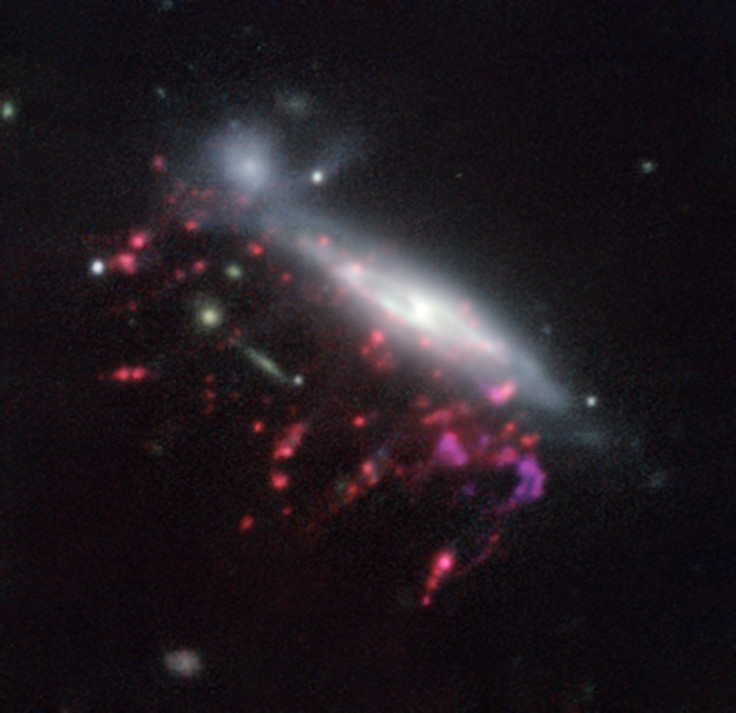How cosmic jellyfish fuel supermassive black holes
Jellyfish galaxies are intriguing as they can shed light on galaxy evolution.
Among all the galaxies in the universe, jellyfish galaxies are unique. Named after the long "tentacles" of material that extend for tens of thousands of light-years beyond their galactic discs, they are intriguing to scientists as they could provide new clues about how galaxies evolve.
A team of scientists by Bianca Poggianti from the INAF-Astronomical Observatory of Padova in Italy is currently conducting a large project to study the evolution of galaxies and how gas is stripped from galaxies.
"We are looking at 114 galaxies to try to answer the question of how, why and where in the universe galaxies lose their gas," Poggianti told IBTimes UK.
In a study now published in the journal Nature, the researchers have focused in particular on seven jellyfish galaxies.
Galaxies are the main structure in the universe which organise matter and jellyfish galaxies are special because they have something that others don't have – long tails of gas, which is removed from the main galaxy body," Poggianti added.
The process of removing the gas from the centre of the galaxy and producing the tentacles of jellyfish galaxies is known as ram pressure stripping. For the first time, the scientists were able to show that there is a strong link between this process and supermassive black holes.
Feeding the black holes
Using the Very Large Telescope at ESO in Chile, the scientists indeed discovered that six of the seven jellyfish galaxies featured a supermassive black hole at the centre, feeding on the surrounding gas.
"This strong link between ram pressure stripping and active black holes was not predicted and has never been reported before," said Poggianti pointed out in a statement. "It seems that the central black hole is being fed because some of the gas, rather than being removed, reaches the galaxy centre."

This finding is important because it suggests a way in which gas may be stripped from galaxies, a process that is key to understand the evolution of galaxies.
Another longstanding question that the study may help answer is why only a small fraction of supermassive black holes at the centres of galaxies are active. While supermassive black holes are present in almost all galaxies, it's still a puzzle why only a few are accreting matter and shining brightly.
These results reveal a previously unknown mechanism by which the black holes can be fed, and thus also offer new clues to help scientists understand the connections between supermassive black holes and their host galaxies.
© Copyright IBTimes 2025. All rights reserved.






















